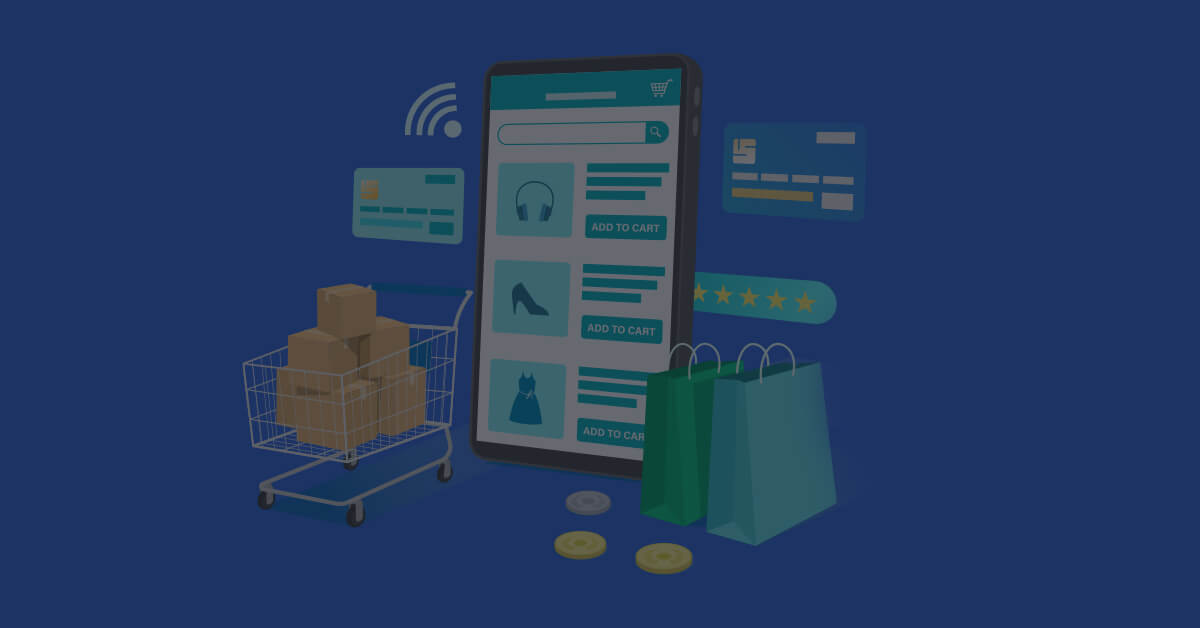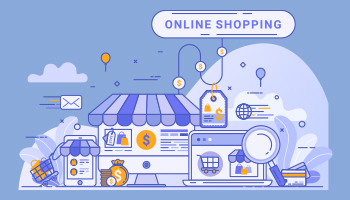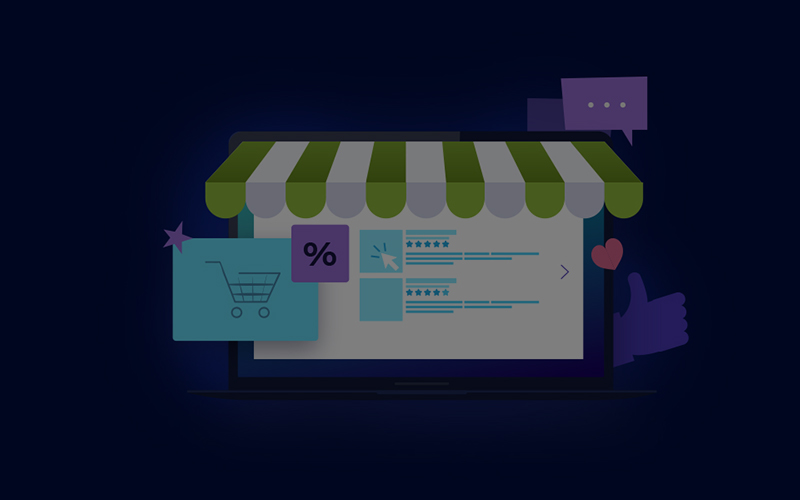Most consumers today look to purchase items – those that are a daily necessity and luxury items, online. Convenience was the catalyst for this shift from shopping from a physical store to shopping online, and ever since Covid, this movement has accelerated.
E-commerce sales in India were expected to increase by 7%-8% in 2020 but, in reality, increased by 36% in the last quarter of 2020. Flipkart experienced new user growth of close to 50% soon digital marketing after the lockdown. This report by Statista further backs the pandemic as being a major factor for the increase in e-commerce sales:

Reasons for increased online purchases during the coronavirus (COVID-19) pandemic in India as of May 2020.
This increase in digital transactions in favor of physical ones has naturally led businesses to move to e-commerce models to continue serving customers and selling products, and an already competitive market has become even more competitive.
With many options available to consumers today, positioning your brand to the right customer is essential to beat the competition. E-commerce marketing services have become the need of the hour.
Digital marketing is the most important marketing activity that e-commerce brands should target to increase brand awareness, reach their target audience, and increase sales. The growing internet and smartphone penetration have increased online purchases, and reaching out to people on platforms they are most active on is the prudent approach.
This guide covers five key e-commerce digital marketing strategies that you should use to boost sales-
5 Key Digital Marketing Strategies for E-Commerce Brands
1. Generate Awareness through Paid Campaigns


Creating awareness for your brand and product should be the starting point. A potential customer who doesn’t know about your brand or product cannot buy it.
Before you can start targeting an audience to create awareness, you need to define your target audience and create customer personas. This should be done through a combination of human ideating and technology.
Get key stakeholders together to define what an ideal customer looks like. Define everything – their age, geography, gender, pay scale, interests, dislikes, etc.

Relevant Resource:
How to Effectively Use PPC to Drive Traffic to Your eCommerce Website
Next, use tools like website analytics and social media analytics to learn which users are already showing interest in your brand and product. Combine the two to create an exhaustive list of features per ideal customer (there could be multiple).
Then leverage paid ads to reach these customers and create brand awareness. You can achieve results organically, but they could be slow, especially for new brands. Paid ads can draw better ROI, faster.
Run search engine search ads, display ads, and social media ads to create brand awareness. Use the filters provided by each platform to reach the ideal users you defined when creating the ideal user persona.
2. Reinforce Your Brand with Retargeting Campaigns


Customer awareness campaigns generally create brand awareness but might not immediately increase sales. The purpose is to take your brand to a huge audience and enforce your brand and its values on their minds for the lowest CPM (cost per thousand impressions).
The next step is creating more targeted ads and reaching people who showed an interest in your products. This can be done through retargeting campaigns.
All platforms – Google, Facebook, LinkedIn, etc., capture information of users who click your ads and visit your website but don’t make a purchase.
This audience can prove to be beneficial – they had the initial intention of purchasing your product, or they showed interest, but for some reason, did not go through with the purchase. By making your products more enticing – through discounts, sales, or just by reminding them of their intent, you can engage them once more and convert them.
Create a separate set of ads to retarget this audience. Study analytics and learn who this audience is, what their interests might be, what are the sticking points (that stop them from making a purchase), and then create ads that speak to them.
3. Use Quizzes to Engage and Collect Targeted Leads


Very few e-commerce brands are leveraging quizzes. You might think a quiz adds extra steps in the user’s journey and is thus a bad idea, but the stats say otherwise – 81% agree that interactive content is more effective in grabbing attention (than static content), and 93% of marketers agree that interactive content educates its buyers.
To add a third benefit to quizzes (the first being it grabs attention and the second being it educates the user), they are a great way of collecting useful user information in a fun and creative way.

You might also like:
E-Commerce Marketing 101 – Tweaking Your Strategy for Conversions
Quizzes are especially helpful when you are selling multiple products or SKUs. You can create a quiz to understand your customer’s needs and then direct them to products they are most likely to be interested in, saving them time perusing the entire store for a product (which more than makes up for the extra steps added in the user journey).
4. Sell Directly on Social Media


People spend a huge amount of time on social media. If you sell your products directly through these platforms (instead of directing them to your website first), you will save them time and increase sales.
This might reduce footfall to your website and online store, but it shouldn’t matter when sales rise.
Facebook has ‘Facebook Marketplace,’ Instagram has ‘Instagram Checkout,’ Google has Shop Ads, etc. Each of these platforms allows you to sell your products directly with a checkout option on the platform. By listing your products there, you increase visibility, and that will increase sales.
5. Tap into Affiliate and Influencer Marketing


Affiliate and influencer marketing is great to generate awareness and store traffic. Affiliates are people or brands whose websites generate a huge number of visitors per day. On the other hand, influencers are people (or handles) that have a massive following.
By partnering with affiliates and influencers, you get to take your brand and products to an already established audience source, saving you time and effort on creating an audience base of your own (which you should continue to work on as well).

Also read:
The key here is finding the right affiliates and/or influencers. Don’t just go by website visits or follower count. Spend time perusing their content and find out if their style and message resonate with your brand and products. This process might take time, but once you have a list of affiliates and influencers who work in our niche, you can continue to work with them to generate constant traffic to your store.
Conclusion
eCommerce digital marketing will play a critical role in growing your business and increasing sales. It takes the right strategy and full-funnel approach to connect and reconnect with your customers in different stages of the marketing funnel. Getting your marketing approach right can take time but by joining forces with an end-to-end e-commerce marketing partner agency like Amura, you can scale your e-commerce business faster
